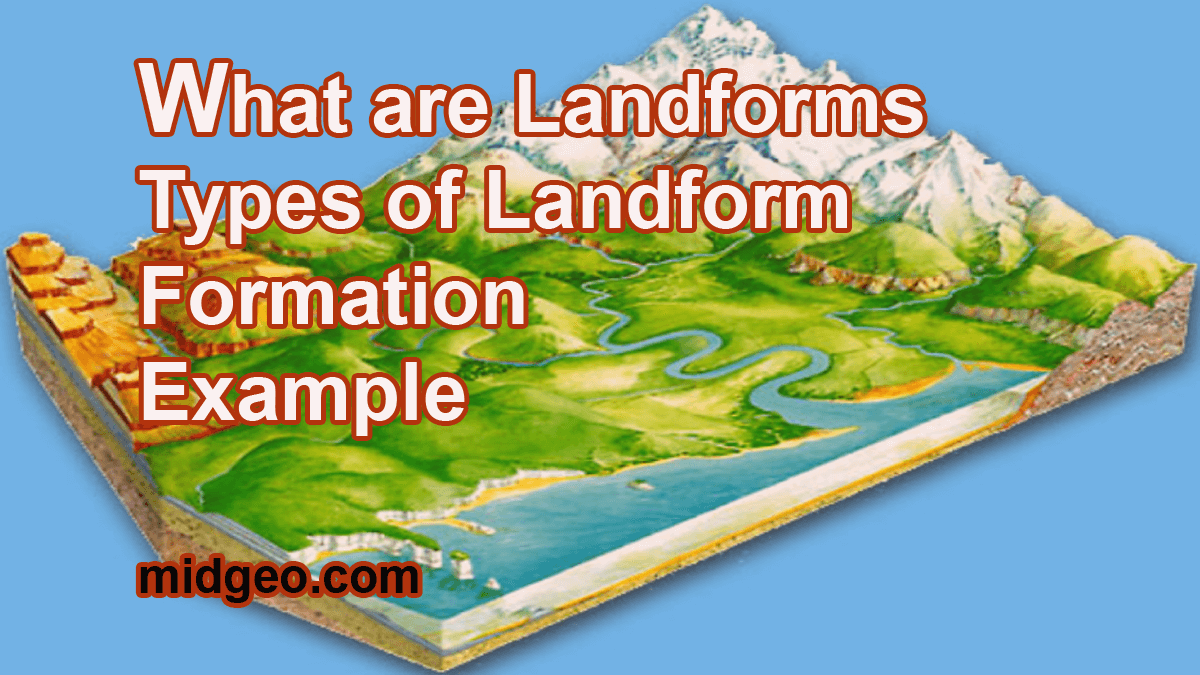What Are the 10 Landforms All Types of Landforms On Earth

All Types of Landforms On Earth: Landforms are natural features on the earth’s surface that are created by the forces of nature such as water, wind, and volcanic activity. They come in different shapes, sizes, and forms, and are essential for understanding the geography of our planet. In this article, we’ll take a look at what are the 10 landforms, also what are 7 different types of landforms that exist around the world.
Read Also: What are Landforms? Formation, Example
What Are the 10 Landforms
- Mountains – Mountains are the highest and most prominent landforms on earth. They are formed by the collision of tectonic plates or volcanic activity. The Himalayas, the Andes, and the Rockies are some of the world’s famous mountain ranges.
- Plateaus – A plateau is a flat-topped landform that stands higher than the surrounding area. It is usually formed by volcanic activity or erosion. The Tibetan Plateau and the Deccan Plateau in India are examples of plateaus.
- Valleys – Valleys are low-lying areas between mountains or hills. They are usually formed by erosion from rivers or glaciers. The Grand Canyon in the United States is a famous example of a valley.
- Canyons – Canyons are deep and narrow valleys with steep sides. They are usually formed by the erosion of rock by water. The Fish River Canyon in Namibia is an excellent example of a canyon.
- Plains – Plains are vast and flat areas that have low elevations. They are usually formed by sedimentary deposits or volcanic activity. The Great Plains of the United States and the Eurasian Steppe are examples of plains.
- Deserts – Deserts are dry and barren areas with little or no vegetation. They are usually formed by a lack of precipitation or by evaporation. The Sahara Desert in Africa and the Gobi Desert in Asia are examples of deserts.
- Islands – Islands are landforms that are surrounded by water on all sides. They are usually formed by volcanic activity or by the movement of tectonic plates. The Hawaiian Islands and the Galapagos Islands are examples of islands.
- Peninsulas – Peninsulas are landforms that are almost surrounded by water on three sides. They are usually formed by erosion or by the movement of tectonic plates. The Iberian Peninsula in Europe and the Malay Peninsula in Southeast Asia are examples of peninsulas.
- Caves – Caves are underground chambers and passages that are formed by the erosion of rock by water. They are usually found in areas with limestone or other soluble rocks. The Mammoth Cave in the United States and the Waitomo Caves in New Zealand are examples of caves.
- Deltas – Deltas are triangular-shaped areas where a river meets the sea. They are usually formed by sedimentary deposits carried by the river. The Nile Delta in Egypt and the Ganges Delta in Bangladesh are examples of deltas.
What Are the 10 Landforms in the World || Types of Landforms
All Types of Landforms on Earth
As we explored earlier in this article, there are many different types of landforms on Earth, ranging from towering mountains to vast deserts and everything in between. But what are the specific types of landforms that people commonly refer to?
When people talk about the types of landforms on Earth, they may refer to different numbers depending on the context. For example, some may mention “five types of landforms,” while others may refer to “seven different types of landforms.” So, what are these commonly recognized numbers of landform types?
- What is a Beach? How Are Beaches Formed?
- List of Landforms A to Z on Earth
- Which Land Feature Supports the Theory of Continental Drift?
- How are Sedimentary Rocks Formed: Understanding the Formation Process
- Why is a Delta Often Used as an Agricultural Area?
What Are the 5 Types of Landforms
Let’s start with the “five types of landforms.” While there are certainly many more than five types of landforms on Earth, this number is often used to refer to the most basic and essential landforms. These five types are:
- Mountains: As we previously discussed, mountains are the tallest and most prominent landforms on earth.
- Hills: Hills are similar to mountains but are typically shorter and less steep.
- Plateaus: Plateaus are flat-topped landforms that are higher than the surrounding area.
- Valleys: Valleys are low-lying areas between mountains or hills.
- Plains: Plains are vast, flat areas that have low elevations.

What Are 7 Different Types of Landforms?
While the “5 types of landforms” are a common reference, others may mention the “7 different types of landforms.” In this case, the seven types are a bit more specific and include:
- Mountains
- Hills
- Plateaus
- Valleys
- Deserts
- Islands
- Coasts
Coasts are defined as the areas where land meets the sea. This includes shorelines, beaches, cliffs, and other coastal features. While coasts may not always be considered a distinct type of landform, they are certainly a unique and important feature of the earth’s geography.
However, while there are many different types of landforms on earth, some people may commonly refer to either the “five types of landforms” or the “seven different types of landforms.” Regardless of the number, each type of landform is essential in understanding the geography of our planet and the forces of nature that shape it.





